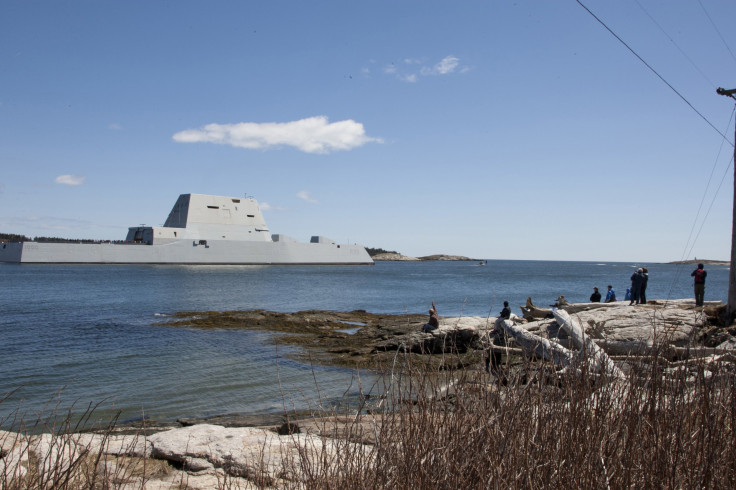Will Trump Go To War With North Korea? US Offers To Deploy Fierce Stealth Destroyer After Missile Threat

The U.S. could soon deploy a new $4 billion dollar warship to the Korean peninsula as part of an effort to deter North Korean aggression, authorities in Seoul revealed Monday.
Adm. Harry Harris, head of the U.S. Pacific Command, recently discussed the possibility of sending the USS Zumwalt to a South Korea naval base during a meeting with South Korean lawmakers, the Korean Herald reported Monday. The discussions did not result in any official agreements but occurred in response to South Korean requests for more permanent stationing of U.S. military assets, the Herald reported.
The report came after North Korea condemned on Friday a successful missile interception drill conducted by Japan, South Korea and the U.S. off the coast of Hawaii. The drill was a response to North Korea's most recent threat — Pyongyang had said it would soon test a new intercontinental ballistic missile system, and they may have made good on their promise. U.S. intelligence satellites recently documented activity at a North Korean missile factory, military officials told CNN in January.
The Zumwalt is the most advanced U.S. warship and the largest surface combatant in the world, according to the Navy. Construction of the first of three Zumwalt ships began in 2009 and ended in 2013.
But its despite cutting-edge technology, the ship has run into problems since its September deployment. Just weeks after it set sail from its home in Maine, engineering problems caused the the 610-foot, 15,000-ton ship to shut down for repairs while crossing the Panama Canal. The military has also been criticized for the cost of the ship's ammunition: A shell for one of the ship's long range guns cost $800,000.
The Zumwalt isn't the only trick the U.S. has up its proverbial sleeve. Newly confirmed Defense Secretary James Mattis was in Seoul last week to meet with South Korean officials and discuss the Terminal High-Altitude Area Defense, an American anti-missile system also known as Thaad.
“Thaad is for defense of our allies’ people, of our troops who are committed to their defense,” Mattis said.
The U.S. and South Korea had wanted to deploy Thaad before the end of the year, but that timeline could be moved up in the face of North Korea's recent threats, the New York Times reported.
© Copyright IBTimes 2024. All rights reserved.






















